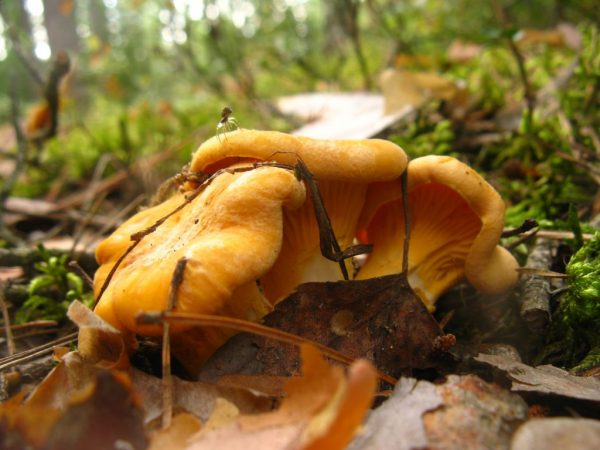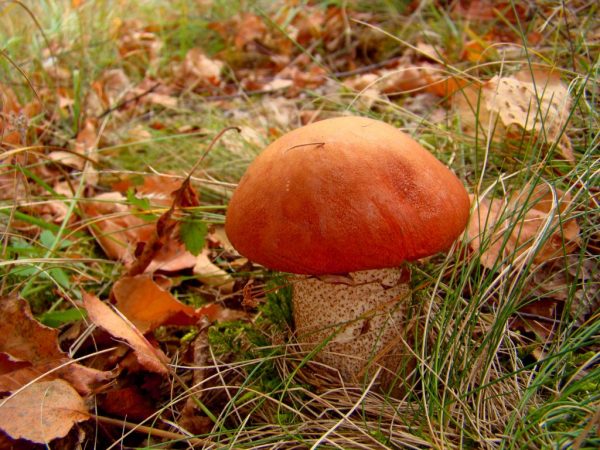Mushroom places of the Smolensk region
Mushrooms of the Smolensk region are characterized by a high density of growth, they can be found almost everywhere where there is a birch forest. In any case, every experienced mushroom picker will tell you about it.

Mushroom places of the Smolensk region
For those who are just beginning to comprehend all the charm of the "quiet hunt", a map of mushroom places has been compiled.
Smolensk region
The following mushroom spots are found here:
- Lake Aleksandrovskoe: the forest nearby is famous for its mushrooms. You can get there by private car or by bus number 20.
- Lake Astrogan: the forest located near this reservoir is very interesting for mushroom pickers. Bus number 103 goes there.
- village of Spas-Lipki: you can get to this place by bus number 133.
- village Babna: to get to it, you should drive towards Kaspli for about 30 km.
Krasninsky district
Mushroom places of the Smolensk region of this area can be found in the vicinity of the village of Gusino. The settlement is located near the highway M1 "Belarus" at a distance of 20 km from the regional center. This is the most fruitful place in the Smolensk region. It is immensely popular with lovers of this product, and no one leaves here without a full basket.
Demidovsky district
In this area of the Smolensk region, mushrooms should be found in the villages:
- Nikitino: this corner of the Smolensk region can be reached by moving in the direction of Velizh about 15 km from the regional center (near the village of Zakrutye).
- Lukashovo: located in the same direction as the previous one, but at a distance of 18 km from the city.
- Poluyanovo: the direction is the same, the location is not far from the asphalt plant.
The presence of an asphalt plant requires the removal of mushrooms outside the sanitary zone of the plant.
Velizhsky district
Mushroom places in this area of the Smolensk region are located in the following villages:
- Lower Cleavers: this settlement is located 8 km from Velizh along the Vitebsk highway.
- Upper reaches: this corner can also be reached by the Vitebskoe highway. It is located 18 km from the regional center.
- Panfilovo: this place is located near the village of Kashino, which is located at a distance of 25 km from the district center.
Elninsky district
To gather mushrooms in the area, it is recommended to visit the forests near these villages:
- Pleshivtsevo: to get to the settlement, you need to go in the direction of Dorogobuzh 20 km from the regional center.
- Skip-the-line: located at a distance of 30 km from Yelnya. To get to it, you need to move in the direction of Roslavl.
- Fedorovka and Old Mutische: the first of them can be reached by going southeast at a distance of 12 km from Yelnya, to the second - 16 km from the same city.
Dukhovshchinsky district

The area is rich in mushroom places
Mushroom places in the Smolensk region in this area are located in the forests near the villages:
- Eryshi: you can get to this settlement if you move in a northerly direction. The corner is located 10 km from the district center.
- Ribshevo-1: the direction is the same as in the previous place, the distance from the regional center is a little further - 31 km.
Roslavl district
The most productive place in the region is the village of Khokhlovka. You can get to it if you move in the direction of Yelnya. The village is located 12 km from Smolensk. However, the Roslavl region is, in principle, famous for the abundance of mushroom places, so you can look for them not only near this settlement.
Irina Selyutina (Biologist):
As soon as the snow begins to melt, one of the earliest and very first mushrooms appears on the sections of the forest warmed by the sun - sarcoscith. It looks like a kind of beautiful red "mushroom flower". Representatives of two species of this genus can grow nearby: sarcoscif alai and sarcoscifa austrian. To distinguish them "by eye", without magnifying devices will not work. They are commonly referred to as the "elven bowl", "little rubella" or "the" scarlet saucer ". The sizes of apothecia can reach 3-5 cm in diameter. It is hymenium that gives the color to the inner surface, which gave the name to the mushroom.
They prefer forests (mixed and broad-leaved), city parks and roadside forest belts for living. There they settle both on the ground and on plant remains of various origins. They also like the roadside ditches, the non-flooded shores of small marshes littered with dead wood, and the damp forest lowlands. Sarkoscyphs grow either singly or in large groups. The mushroom is widespread almost throughout the European part of the Russian Federation. Despite the fact that sarcoscifa appears in early spring, you can find it in late autumn and winter (if it is warm enough, with long or frequent thaws). However, the usual growth time falls on the 2-3rd decade of March or early April, and as long as the average daily temperature is kept at the level of + 15 ... + 20 ℃. As soon as this threshold is exceeded - that's it, the mushroom is "gone".
Behind the sarcoscith, morels, morels, stitches and hats appear. Collect them diligently in order to feast on themselves and surprise friends.
Types of false mushrooms
If the mushroom picker has just begun to comprehend the basics of "quiet hunting", then it is better not for him to go to the forest alone. It is recommended to take with you a person who understands mushrooms and can distinguish edible from poisonous.
If an inexperienced mushroom picker is still going to go into the forest alone, then he needs to take only those species that are not in doubt. The following types are most often confused with edible mushrooms:
- satanic and bilious: they are often mistaken for porcini mushrooms that grow abundantly in the Smolensk region. But in fact, the gall mushroom is unsuitable for food because of its bitter taste, and the satanic one is poisonous. They differ in that the bottom of the cap (spore-bearing layer - hymenophore) has a pink or red tint. Poisonous mushrooms have one more sign: if you break the cap, it will first turn red at the place of damage, and then change its shade to a dark color;
- false mushrooms: they can be confused with real mushrooms. It is very easy to distinguish these species from each other. The main feature of edible mushrooms is the presence of a "skirt" ring on the leg. Poisonous ones do not have it. In addition, good mushrooms have a brown-yellow hat, false ones - red or yellow-green.
It is also not recommended to pick mushrooms, inside of which a large amount of liquid has accumulated. This indicates damage or over-ripening. Such mushrooms can release harmful substances and "turn" from edible to poisonous.
The map of mushroom places of the Smolensk region will help to collect a rich harvest of boletus, white, boletus and other types of mushrooms. In addition, you need to know the differences between edible mushrooms and false ones, so that a trip to the forest does not end with sad consequences.


